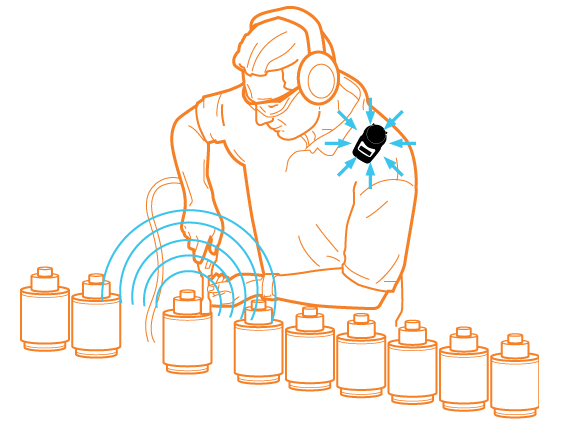Environment
Condition Monitoring of Power Plants
Air Pollution Control Technology
Emission Analyzers
Environment
Environmental Noise
By measuring, mapping and responding to environmental noise levels, Brüel & Kjær can safeguard health and improve the quality of life - and quality of sound - for people who live and work in areas affected by noise pollution.
From motorways to concert halls, cityscapes to waste disposal sites and production floors to offices, we all want our environment to be is as comfortable, safe and peaceful as possible. The effective management of environmental noise can safeguard our health and our quality of life.
By mapping and responding to noise levels / noise pollution in the environment, Brüel & Kjær can ensure compliance with regulations and maximize the comfort of those who work and live in the areas of concern. By understanding the sources in detail, Brüel & Kjær can work to reduce them effectively. And by perfecting the acoustics inside any space, they can optimize its ability to fulfill its functions.
Here are some of the ways Brüel & Kjær can help you attain the right balance between noise pollution and the surrounding environment:
Workplace Noise
Establishing the amount of noise in the workplace in regard to machines and equipment allows you to ensure proper protection for your employees. Workers who spend their days near noisy machinery can face serious health issues if their employers don’t take measures to prevent injury. Even for occasional visitors to environments with dangerous sound emissions, effective protection and prevention is essential to safeguard their health.
Dangers in the Workplace
Ensuring workplace health and safety begins with understanding the dangers. Establishing the noise emission of machines and equipment allows you to calculate the protection required and the maximum length of time before a person becomes overexposed.
Measuring the emissions of equipment is one aspect, while the room acoustics of workplaces – how sound propagates and reverberates out from the equipment –is an important factor in the total exposure in different locations - and essential to limiting the noise exposure.

Urban Noise Pollution
The soundscape in a town or city has a huge effect on the quality of life there. The noise from traffic and transportation can affect our physical and psychological health.
This is why urban noise management and mapping are major concerns for urban planners, municipal officials, and politicians alike. And since reducing noise levels through traffic regulation, low-noise road surfaces or noise barriers is very expensive, it is best to avoid such measures where possible.
In short, preventing and reducing noise before it occurs, through noise-action plans, is the best way to minimize noise pollution from sources including wind farms and new roads.
Urban noise assessment
Assessment of urban noise from commercial properties or road traffic is the first practical step in urban noise management. The next stage is noise mapping, requiring the systematic charting of individual noise-source activity. Often, a large number of different sources contribute, so the impact of each specific noise source must be evaluated. These are fed into a calculation engine to create a range of noise metrics.
It is necessary to model the propagation of the noise including reflections from and attenuation of buildings and structures. These all greatly affect the noise levels experienced on the ground. Since this requires a large amount of information about the mapped area, it’s important that noise-capturing systems can interface with geographic information systems (GIS) and other management systems.

